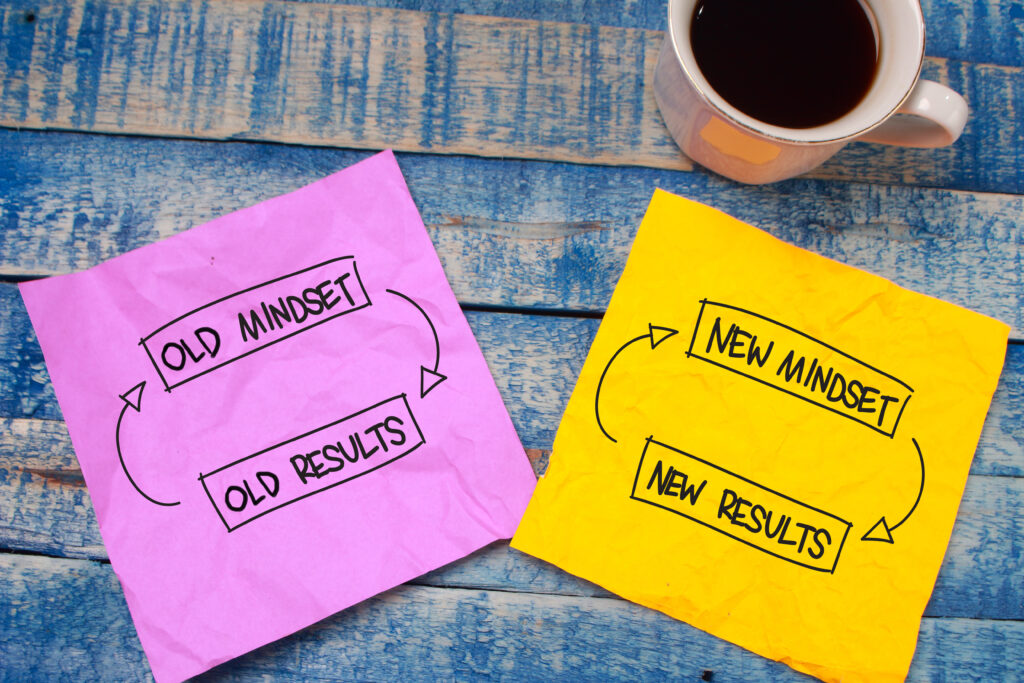When 16-year-old Daniel moves to Los Angeles from New Jersey, he meets a blonde-haired blue-eyed beauty at a beach party. She tells him she’s recently split up with her boyfriend, Johnny. Daniel thinks he’s in luck.
But Johnny has a black belt in karate. When he hears that Daniel has eyes for his girl, he turns one of them black. To stand up to his rival, Daniel sets up a dojo in his living room. He’s practicing sidekicks from a picture book when a sage-like superintendent shows up to fix the kitchen faucet.
Mr. Migayi is no ordinary superintendent. He’s descended from a long line of martial arts’ masters from Okinawa, Japan. Mr. Miyagi not only repairs leaky faucets, he catches flies with chopsticks, collects vintage cars, and will be Daniel’s Sensei.
Wax On, Wax Off
Mr. Miyagi takes “Daniel-san” on as his student, but he warns the kid that Daniel must abide by his old-fashioned teaching style: “Teacher say, student do.”
“No questions,” says Master Miyagi, “Deal?”
“Deal,” agrees Daniel.
Mr. Migyagi hands Daniel-san a sponge: “First wash all the cars, then wax.”
“Why do I have to—“
“Wax on, right hand. Wax off, left hand. Breathe in through the nose, out through the mouth.”
Sensei Miyagi walks off serenely, leaving his new student to it, repeating the mantra: “Wax on. Wax off.”
Daniel washes. He waxes. On and off. He paints his Sensei’s fence. Up and down. Sands his deck. Right hand making a circle. Left hand making a circle.

On the last evening after four full days following all of his Sensei’s orders, Daniel finds himself up past sunset, still slapping green paint left and right across the wooden siding of his Master’s bungalow. The crickets chirp.
Carrying a tackle of bait and a pole, Mr. Miyagi walks past his diligent mentee.
“Oh!” Mr. Miyagi pauses, leaning towards Daniel-san on his ladder and eyeing the freshly painted siding: “Missed spot.”
“What spot?” Daniel-san says, stepping down. Why has his Sensei never invited him to go fishing?
“You karate training,” says Sensei Miyagi.
“I’m what?” Daniel protests. “I’m bein’ your goddamn slave is what I’m being. Now we made a deal here…You’re supposed to teach, and I’m supposed to learn. Remember? For four days, I’ve been bustin’ my ass, and I haven’t learned a goddamn thing!”
“Ah,” Mr. Miyagi grunts, “You learned plenty,”
“I learned how to sand your deck maybe. I wax your car. Paint your house. Paint your fence—”
Sensei Miyagi grunts: “Not everything is as seem—”
“Not everything is as seem”
If you’ve seen the movie, you know what happens next.
After waxing on and off, sanding in careful circles, painting up and down and left and right, Daniel masters a few moves. He primes his reflexes. He perfects his patience. Concentration. Resilience.
He relies on all those qualities to conquer his enemy: His romantic rival, the high school stud, the blond-haired, blue-eyed bully.
Miyagi’s car waxing mantra ups Daniel’s karate game.
But beneath all the chores, below the “very important” art of breathing in and out, beyond the feat of his ultimate victory, Daniel-san may have learned something far more valuable.
The Art Of The Crane
Have you ever seen a crane hunt for fish?
It’s magnificent.
The bird looks so still and serene that if you didn’t know better, you’d assume the crane were a statue made of stone.
Are you familiar with that famous film still from The Karate Kid?
Daniel-san lifts his left leg with his knee bent and his shin dangling in the air. He extends his arms above his head, wrists crooked downwards, hands hanging like hooks.
Daniel’s poised. Relatively steady. He’s about to flip both his legs like a light switch and knock his opponent in the head and win the match.
But up until that moment, Daniel has only seen the “crane kick” from a distance. He caught his teacher practicing on the beach, in the sun.
Daniel’s been bullied. Humiliated. Bruised.
His leg is injured. The kid has endured excruciating pain. His rival has learned his style of “karate” in the dojo of Cobra Kai, where, purportedly: “fear does not exist” and “pain does not exist.”
A Vietnam vet, Cobra Kai taught Johnny that the “enemy deserves no mercy.”

Daniel has learned the opposite. He’s learned neither to take offense nor to assume the offensive. Mr. Miyagi has taught Daniel that the word karate comes from two roots: te, meaning “hand” and kara meaning “empty.”
“Karate is only for defense,” says Sensei Miyagi, so he has taught his students to keep an empty hand and an empty mind. He’s learned to assume each posture from the inside. He’s adopted a mind of patience. Tranquility. Self-possession.
Daniel hasn’t learned to fish, but he’s been primed for that too.
The Neuroscience Of Self-Mastery
“Wipe your mind clean,” Mr. Miyagi tells Daniel-san when teaching him to hedge Bonsai trees. “Everything but tree. Open eye. Remember picture…trust picture. If it come from inside you, it’s always right.”
Miyagi’s tree-cutting technique sounds convincing enough. We’ve already seen the Miyagi method in action. But when Daniel-san “wipes [his] mind clean,” what is happening in his brain?
Which neural networks flip on and off when Daniel-san waxes on and off?
From a neuroscientist’s perspective, what does it mean to achieve self-mastery?
Which synapses and dendrites and neuropeptides give Daniel-san the mental finesse he needs to pull off the ultimate crane kick?
Does Daniel learn to bypass his emotions? Has he found a way to extinguish his fear? His anger? His jealousy? His pride? His pain?
Quite the contrary.
Daniel feels all the feels.
But sensing pain is not the same as giving into pain.
Being afraid hardly means letting your fear run the game.
Noticing the heat rise in your chest and flush your face needn’t mean that you flip your lid, blow your top.
Impulses, seemingly out of nowhere, to fight and to flee affect us all.
There’s a gap between the impulse and the act. There’s a pause between action and reaction, between provocation and assault.
When you stand in front of your enemy and the mere sight of him stirs up your rage, when his insults push your buttons, the neurochemical equation in your brain needn’t knock you off your rocker.
Your feelings may compel you to lash out. But if you do, will your feelings be the culprit? Will your anger be the crime?
A brain without pain leads to pathology. To never feel afraid makes the very act of living an exceedingly dangerous affair. Without any “negative” valence in your vast spectrum of emotions, how might you feel empathy for the rest of us?
Luckily, Our Brains Know Better.
The most contemporary interpretations of brain imaging suggest that our whole brains function as the result of a delicate interplay of large-scale networks. It’s all connected.
When you feel “fear,” what you’re experiencing is a cocktail of sensations, a mix of neurochemicals, a string of impulses coursing through your neurocircuitry.
It’s all one big formula conspiring to keep your organism alive.
Popular science equates the amygdala with fear. Some popular science journalists call it a “threat detector.”
An almond-shaped cluster of nuclei in your brain’s basal ganglia, the amygdalae (there are two) might be better understood as neither the fathers of fear nor vigilantes on the lookout for danger.
They’re just one part of a multisensory process that participates in keeping you alive and well.
They help your brain learn how to rely on your memories to interpret incoming stimuli.
When the scent of bananas triggers recollections of your frenemy, the next time you smell bananas, it might lead your brain to enlist its “imagination network.” You might stir up all sorts of fantasies of ways to defeat your frenemy.

There’s no harm in a fantasy. Just be aware you’re having one. Some of your fantasies might enlist your “laughter” circuitry, others, your “anxiety” circuitry, and still others might provoke your “fight, flight, and flee” response.
But if you train your “wax on wax off” network, you’ll learn to balance your executive control network, which keeps your mind steady on the task. You’ll tame and train your imagination network, which defaults to fantasies without much effort on your part. You’ll invoke your calm center or your salience network.
All that waxing on and waxing off guarantees that the next time you confront your enemy, you’ll be less tempted to go bananas over the slightest provocation.
The Scent Of Success
However you define success—a life of exploration to all corners of the globe, a mansion on Madison Avenue, a career baking brownies for the poor—to get there, one of the most precious lessons you can learn is how to practice self-regulation.
When self-doubt, fear, loneliness, frustration, disappointment, boredom, anger, rage, or pride come creeping along, the skills of self-mastery will give you a high score in emotional intelligence.
That will enable you to be unstoppable.
Here’s a quick innercise, on lender from the Sensei-masters of old
Next time you feel enraged, upset, jealous, defeated (or respectful, grateful, kind, and compassionate for that matter), invite those feelings in for tea. Treat them as visitors in your bungalow. Lay out a welcome mat.
Don’t shut the door at dusk to any of your nighttime visitors. Do they come drunk on sake at midnight? Leave a light on for those wanderers.
Learn from each visitor as you sit across from him or her or them at your kitchen table. Accept them all non-judgmentally, despite their nonsensical rambling.
Resist the urge to reject any of their nonsense outright.
Let them have their say. Don’t act like a dictator to your feelings. Don’t prohibit fear or pain like Sensei Cobra Kai tells his students to do in his fake dojo.
When your feelings have had their say, they often go on their way. Or they transform into new feelings, new thoughts, new sensations. Feelings are shapeshifters. They’re only temporary.
In the meantime, to become a master at anything: pick up a tool. A brush. A can of paint. A sponge. A Japanese sander. A bottle of wax. A pen. A spatula. A frisbee. Any favored tool will do.
Enlist your breath, your eyes, your ears, your hands, and your heart. And do what your inner Sensei asks of you: Listen.
No questions, remember?
Then do what you do anytime you’ve learned something new.
Practice.
Wax on. Wax off.
Paint up. Paint down.
Breathe in. Breathe out.
Stand ready, poised, however empty-handed or empty-headed you may feel. Invite whatever experience may come.
You may be surprised when your success meets you at an uncommon hour.










Thank you for the auspicious writeup. It in fact was a amusement account it. Look advanced to far added agreeable from you! However, how can we communicate?
Fantastic! This is a truly amazing piece; I have gained a lot of clarity from it.
Its like you read my mind You appear to know a lot about this like you wrote the book in it or something I think that you could do with some pics to drive the message home a little bit but instead of that this is fantastic blog An excellent read I will certainly be back
Hello Neat post Theres an issue together with your site in internet explorer would check this IE still is the marketplace chief and a large element of other folks will leave out your magnificent writing due to this problem
Hi my family member I want to say that this post is awesome nice written and come with approximately all significant infos I would like to peer extra posts like this
obviously like your website but you need to test the spelling on quite a few of your posts Several of them are rife with spelling problems and I to find it very troublesome to inform the reality on the other hand Ill certainly come back again
This stage is fabulous. The magnificent information uncovers the publisher’s excitement. I’m shocked and envision additional such extraordinary presents.
I do not even know how I ended up here but I thought this post was great I dont know who you are but definitely youre going to a famous blogger if you arent already Cheers.
I genuinely admired what you’ve accomplished here. The outline is elegant, your written content fashionable, however, you seem to have acquired some unease about what you wish to present going forward. Undoubtedly, I’ll revisit more often, similar to I have nearly all the time, in case you sustain this ascent.
Stumbling upon this website was such a delightful find. The layout is clean and inviting, making it a pleasure to explore the terrific content. I’m incredibly impressed by the level of effort and passion that clearly goes into maintaining such a valuable online space.
Your blog is a constant source of inspiration for me. Your passion for your subject matter is palpable, and it’s clear that you pour your heart and soul into every post. Keep up the incredible work!
Temp Mail Very well presented. Every quote was awesome and thanks for sharing the content. Keep sharing and keep motivating others.
Gerçek medyum hoca hizmeti ile tanıştım bu web sitede hepinize tafsiye ederim
The best psychic site in Turkey BİTLİS
mediums who see the future are on this website
Benim kötü rüya gece korku olayım vardı medyum ajans daki medyumlar sayesinde sorunumu haletim çok mutluyum
mediums who see the future are on this website
Ich habe meine psychologischen Probleme im Zusammenhang mit der Liebe innerhalb eines Tages mit nur einem Wort gelöst.
Thank you for the auspicious writeup It in fact was a amusement account it Look advanced to far added agreeable from you However how can we communicate
Medyum This is the best website in the field of mediumship in the world.
У моей жены тоже были проблемы, мой друг прислал мне ссылку на этот сайт экстрасенсов в Турции, они сделали процедуру, и она прошла успешно, они порекомендовали ее нам, и результат был превосходным.
mediums who see the future are on this website
Medyum This is the best website in the field of mediumship in the world.
I found this website while looking for a psychic in Türkiye medyum, it’s amazing.
Ich habe meine psychologischen Probleme im Zusammenhang mit der Liebe innerhalb eines Tages mit nur einem Wort gelöst.
Merhabalar kesinlikle herkese tavsiye ederim tek kelimeyle harika bir medyum.
Akla gelen medyum gibi değil. Takım elbiseli entelektüel espirili eğitimli ve kültürlü bir beyefendi. En başta çok korkuyordum ön yargılı da yaklaşmıştım ama tüm ön yargım kırıldı. çok teşekkür ediyorum.
Tüm işlemlerimden memnun kaldım teşekkürler
İşinin ehli ilim bilim sahibi bir adam Allah bin kere razı olsun
Merhabalar bir çok işlem yaptırdım ve çok memnun kaldım teşekkürler
Believe me, I am so happy and peaceful now that I recommend it to everyone, it touched my life with its magic wand, thank you very much for everything.
Hayatıma dokundunuz resmen hayatımı değiştirdiniz teşekkür ediyorum
ben 5 yıldır bir kızı seviyordum ve onun gözü işten başka bir şey görünüyordu ve bende arkadaşımın tavsiyesi üzerine bu siteyle tanıştım ve gerçekten çok memnun kaldım.
kesinlikle herkese tavsiye ederim tek kelimeyle harika bir medyum.
Hayatıma dokundunuz resmen hayatımı değiştirdiniz teşekkür ediyorum
Ho cercato molti sensitivi per scopi sanitari e finalmente ho trovato quello che cercavo.
Grazie a Dio, tutta la mia vita è migliorata ora. Grazie.
iyiki sizleri tanımışım iyiki hayaatıma dokunmuşsunuz Allah sizlerden razı olsun…
Benim nişanlım var birbirimizi çok seviyoruz ve kaynanam olacak insan bize büyü yaptırmış sürekli kavga ediyoruz medyum derdimi anlattım ve üzerimde büyü olduğunu bunun çözülebilecek olduğunu söyledi Allah ondan razı olsun şuan çok mutluyuz ve bir ay sonra düğünümüz olacak hiçbir problemimiz yok çok şükür.
Ha guarito mio padre. Grazie a Dio, ora sta molto bene.
Güvenimi kazandığınız için sizlere minnettarım
Dünyanın en iyi medyum sitesidir
Ik belde op advies van mijn vriend en sprak met hem. Ik ben blij dat ik gebeld heb. Ik heb nu vrede en ben gelukkig.
Herkese tüm çevreme tavsiye ediyorum herkeste çok memnun iyiki varsınız
Tüm işlemlerimden memnun kaldım teşekkürler
Herkese tüm çevreme tavsiye ediyorum herkeste çok memnun iyiki varsınız
Merhabalar uzun zamandır site araştırıyordum sonunda buldum çok ama çok teşekkür ediyorum.
Bağlama büyüsü yaptırdım ve etkisini 3 günde gördüm herkese tavsiye ederim
çok memnun kaldım herkese tavsiye ederim.
İyi günler ben işlem yaptırdım ve çok memnun kaldım
İşinin ehli ilim bilim sahibi bir adam Allah bin kere razı olsun